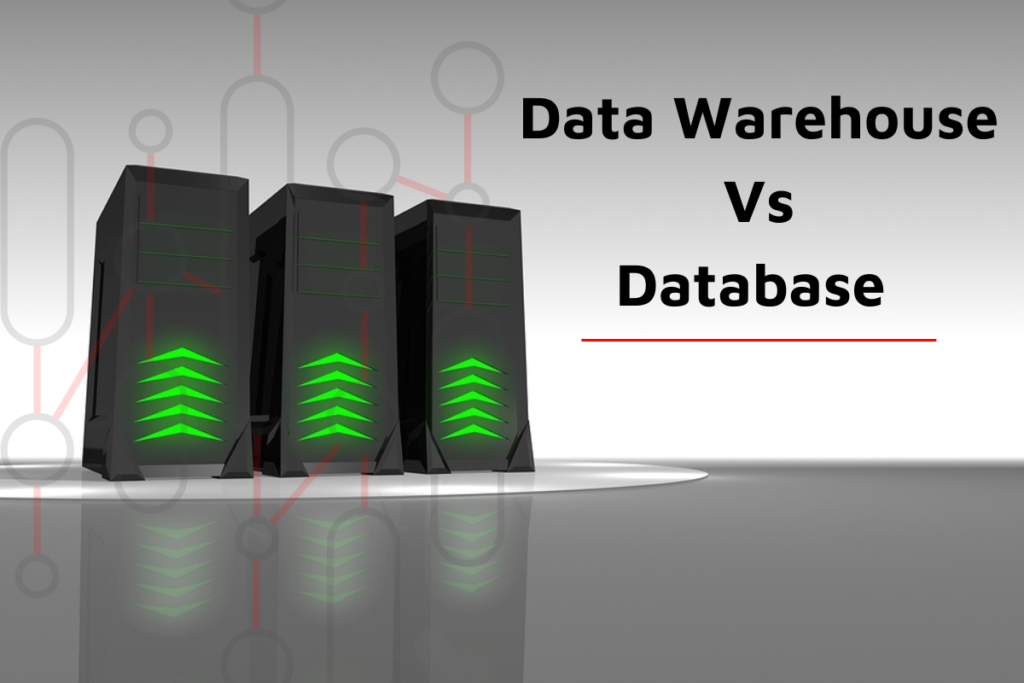Data Warehouse vs Database: The key differences
10 October 2022 | Noor Khan

Cloud technology and advances in hybrid-storage technologies have meant that data storage is no longer left entirely to internal equipment and a single company-owned server. Finding a database management solution that works with the size and scale of your needs is not a task to be overlooked.

Being able to easily access your data, sort it in a manner that makes sense for your business, and know that it is protected in case of power disruptions or cyber attack are all business-critical considerations that must be addressed when determining the best data solutions. We’re looking at data warehouse services Vs databases – what they each do, what the pros and cons of the technologies are, and how they differ from one another, so you can make informed decisions to benefit your business.
What do you need to know about Data Warehouses?
A data warehouse is essentially a central repository for your information to be stored and accessed. Data warehousing services provide space and the tools to integrate data from various sources and create a searchable database. Depending on the service, the data warehouse may also have additional functions for data source integration, lifecycle management, data modelling, and other advanced organisational options.
The pros and cons of a Data Warehouse
As with many other technologies and platforms, there are both reasons for and against using a data warehouse, and these should be carefully considered before a structure is developed and put in place.
The benefits of a data warehouse include:
- Easier integration of data from multiple sources
- Error identification and suggested corrections
- Faster data retrieval
Some limitations to consider:
- Higher maintenance costs
- Increased time spent in preparing the data for the warehouse
- Issues with compatibility, especially at the initial set-up stages
Read about data warehouse Vs data lake and choosing the right data solution.
What do you need to know about Databases?
A database is a structured set of data, which is generally held in an individual location, that can generally be accessed in various ways.
There are different types of databases which are used depending on the project's needs. The main types of databases are:
- Relational
- Object-Orientated
- Hierarchical
- Network
The Pros and Cons of a Database
Making use of an internal or ‘local’ database can have benefits and problems associated with it.
Some of the pros include:
- Minimised data inconsistency
- Stricter control over data redundancy
- Ease of sharing
But some of the cons to consider include:
- Additional costs involved with staff training
- Hardware and software updates and maintenance costs
- Data conversion may be costly
- Incompatibility with other software
Data Warehouse vs Database and the key differences
The key difference between using a local database and a data warehouse service is accessibility – with data warehouses offering wider access.
However, it’s also important to consider that many data warehouses have easy options to purchase more space when the database grows in size, an internal database is limited to the size restrictions of the local server, and it can be both costly and time-inefficient to upgrade the server when these limits are reached. Making the correct choice will rely on your specific business needs, the size of the team involved in working with the databases (or accessing them), and whether you have a growth and expansion plan to consider.
Ardent data warehousing service
Ardent has worked with a wide variety of clients to provide a data warehousing service to ensure data organisation and accessibility. If you are dealing with slow query performance, data coming from multiple sources and increasing load to data, get in touch to find out how Ardent can help you effectively store your data. Our engineers help our clients unlock their data potential every day and can do the same for you.
Explore our data engineering services
Ardent Insights

Are you ready to take the lead in driving digital transformation?
Digital transformation is the process of modernizing and digitating business processes with technology that can offer a plethora of benefits including reducing long-term costs, improving productivity and streamlining processes. Despite the benefits, research by McKinsey & Company has found that around 70% of digital transformation projects fail, largely down to employee resistance. If you are [...]
Read More... from Data Warehouse vs Database: The key differences

Stateful VS Stateless – What’s right for your application?
Protocols and guidelines are at the heart of data engineering and application development, and the data which is sent using network protocols is broadly divided into stateful vs stateless structures – these rules govern how the data has been formatted, how it sent, and how it is received by other devices (such as endpoints, routers, [...]
Read More... from Data Warehouse vs Database: The key differences

Getting data observability done right – Is Monte Carlo the tool for you?
Data observability is all about the ability to understand, diagnose, and manage the health of your data across multiple tools and throughout the entire lifecycle of the data. Ensuring that you have the right operational monitoring and support to provide 24/7 peace of mind is critical to building and growing your company. [...]
Read More... from Data Warehouse vs Database: The key differences






